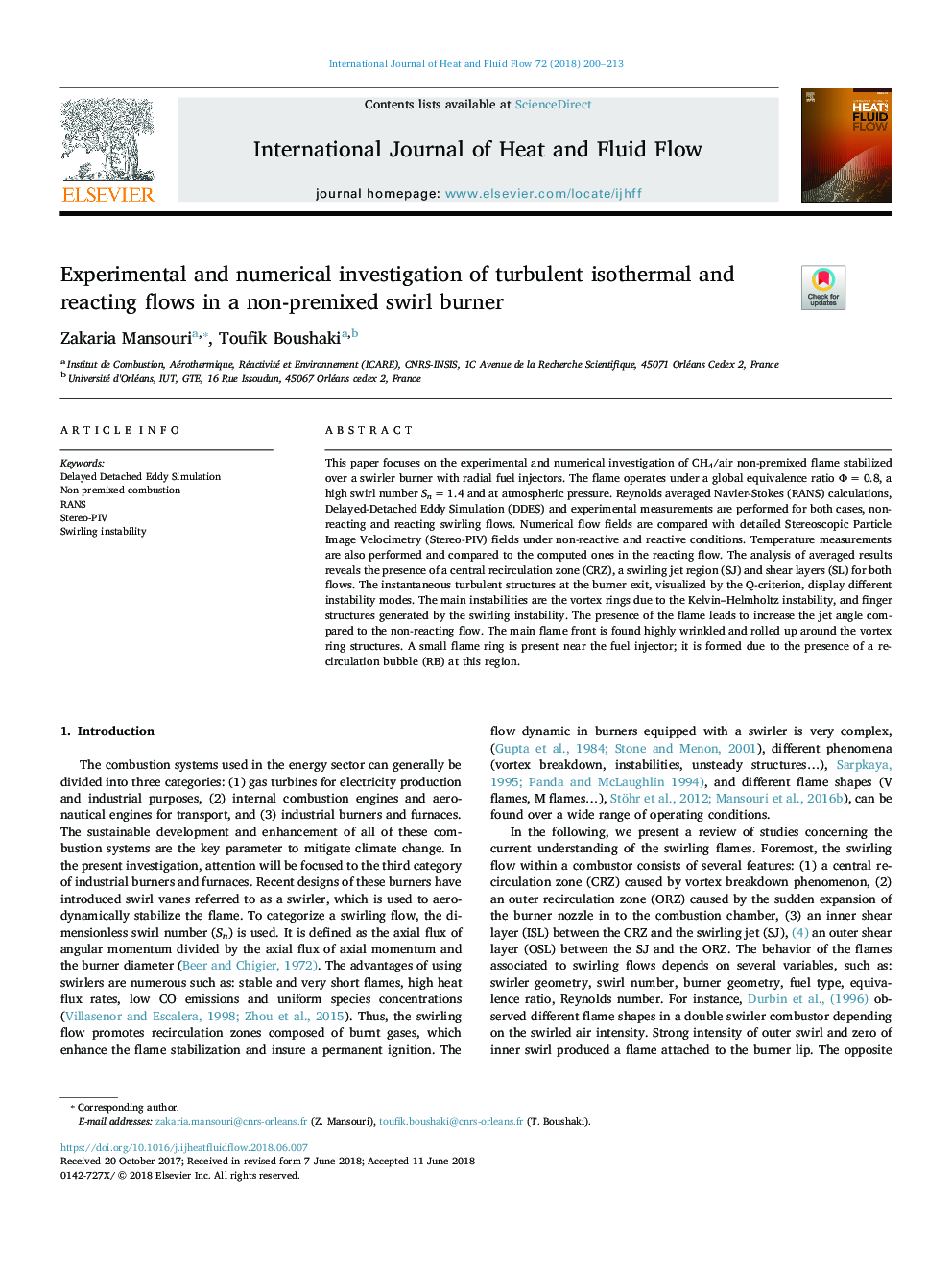| Article ID | Journal | Published Year | Pages | File Type |
|---|---|---|---|---|
| 7053430 | International Journal of Heat and Fluid Flow | 2018 | 14 Pages |
Abstract
This paper focuses on the experimental and numerical investigation of CH4/air non-premixed flame stabilized over a swirler burner with radial fuel injectors. The flame operates under a global equivalence ratio Φâ¯=â¯0.8, a high swirl number Snâ¯=â¯1.4 and at atmospheric pressure. Reynolds averaged Navier-Stokes (RANS) calculations, Delayed-Detached Eddy Simulation (DDES) and experimental measurements are performed for both cases, non-reacting and reacting swirling flows. Numerical flow fields are compared with detailed Stereoscopic Particle Image Velocimetry (Stereo-PIV) fields under non-reactive and reactive conditions. Temperature measurements are also performed and compared to the computed ones in the reacting flow. The analysis of averaged results reveals the presence of a central recirculation zone (CRZ), a swirling jet region (SJ) and shear layers (SL) for both flows. The instantaneous turbulent structures at the burner exit, visualized by the Q-criterion, display different instability modes. The main instabilities are the vortex rings due to the Kelvin-Helmholtz instability, and finger structures generated by the swirling instability. The presence of the flame leads to increase the jet angle compared to the non-reacting flow. The main flame front is found highly wrinkled and rolled up around the vortex ring structures. A small flame ring is present near the fuel injector; it is formed due to the presence of a recirculation bubble (RB) at this region.
Related Topics
Physical Sciences and Engineering
Chemical Engineering
Fluid Flow and Transfer Processes
Authors
Zakaria Mansouri, Toufik Boushaki,
